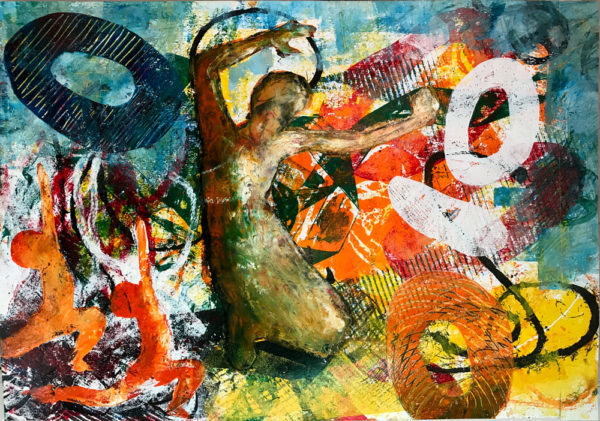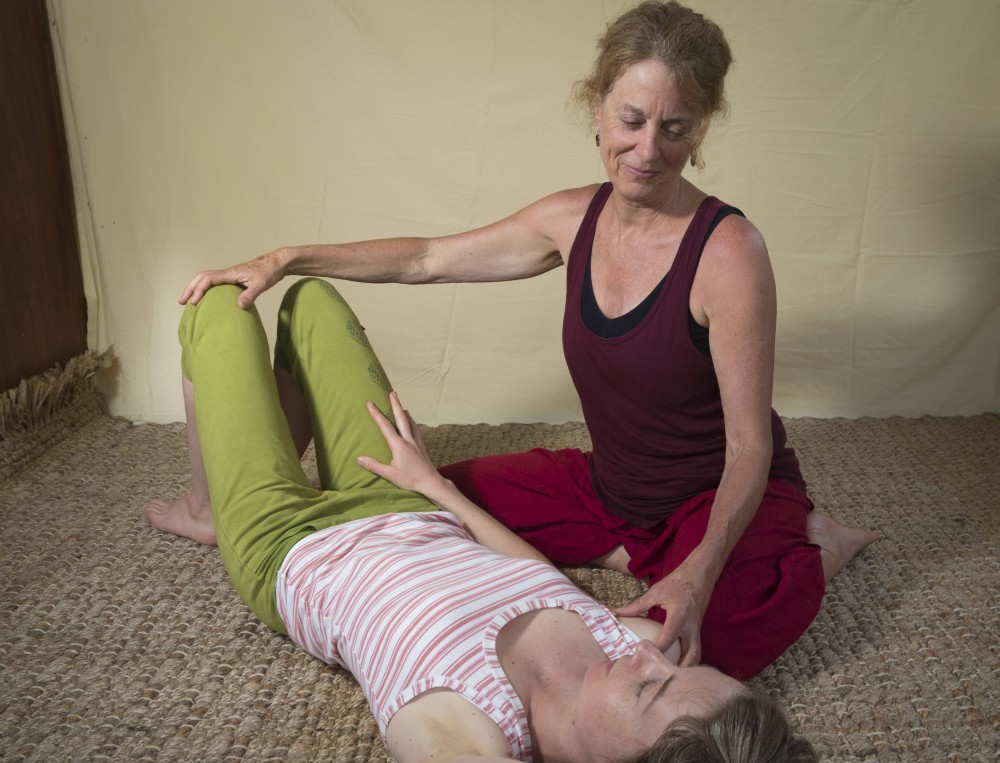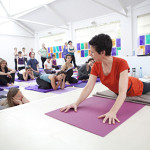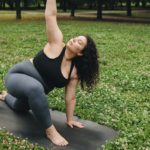
By Dyana Wells, Open Ground School of Meditation
There are many different kinds of movement and exercise classes offered in New Zealand. In Raglan, where I now live, I have come across Yoga, Pilates, Contemporary dance, Nia dance and gentle exercises for seniors.
Somatic movement is a relatively new brand and has become extremely popular around the world. It grew out of Feldenkrais and developed alongside new research into neuromuscular reprogramming.
‘When activity is freed of tension and superfluous effort, the resulting ease makes for greater sensitivity and better discrimination, which makes for greater ease in action.’
Moshe Feldenkrais. Awareness through Movement
Many yoga studios in Australia now offer classes in Somatics as a complement to yoga.
Somatic movement is based on the principle of neuroplasticity – the understanding that the brain is continually remodeling itself in response to new information and experience.
Movement limitations creating tension and pain are not permanent, however old we are. The term Somatic comes from ‘soma’ which means to understand the body as an intelligent, sensitive, living organism. The body is not a mechanical, insensate machine that we need to manipulate and control in order to get results.
Our body/brain organism has millions of years of evolution behind it. It knows how to move well. With somatic movement we find out why it is not able to do this. We find out what is getting in the way.
The job of somatic exercise is to help the brain do its job properly.
The brain controls the way we move, so if we want to change the way we move we need to work with the brain. Neuromuscular reprogramming is the name given to this approach. We work with the brain by feeding it new information, which in this case is information about how we are actually moving. We wake the brain up to what is actually going on.
‘You have to consciously become aware of your entire body and how it feels and moves….. Then, when you have the brain perceiving differences and integrating more parts of yourself, the improvement is fast and transformational.’
Anat Baniel
The problem for us is that when the brain learns a new movement pattern – eg how to ride a bike, how to sign one’s name, how to protect an injured arm, how to not be noticed, how to cope – it may be a healthy pattern or not. After a few weeks of repetition, the brain sends the pattern code to older parts of the brain, for repetitive, unconscious, reflex activation. The pattern becomes an unconscious habit. This frees the upper parts of the brain for new learning. What is now a restrictive and maybe painful movement was, at the time it was learned, the best response possible to the circumstances. It may not serve us well now. It may be crippling us. How do we change?
Slow movement done with awareness allows the brain to wake up again – to what is actually going on. It can then automatically reorganise our movement to become smooth and easy. It will tell the tight muscles to relax and it will integrate movement throughout the whole body. The circumstances are now different. We just need to alert the brain to this.
Somatic exercises are disarmingly simple, extremely effective and very enjoyable.
There is no requirement to be flexible or fit. The only requirement is to be curious and attentive. Everyone can benefit from the exercises. I have found them immensely valuable, even after a lifetime of yoga. I couldn’t believe how they freed up my body. Results happen very quickly and can bring a greater freedom to whatever activities we enjoy, eg: gardening, walking, cycling, surfing, yoga, dancing, swimming.
‘Our sensory motor systems continually respond to daily stresses and traumas with specific muscular reflexes. These reflexes create habitual muscular contractions, which we cannot voluntarily relax. The result is stiffness, soreness and a restricted range of movement…. Somatic exercises are a direct way to reprogram the sensory-motor system…and reverse this process. Bodily (limitation) presumed under the myth of aging is not inevitable. It is, by and large, both avoidable and reversible.’
Thomas Hanna.

Dyana has been a lifelong student of many disciplines. She has a BSc majoring in Botany and Zoology, MA (Hons) in Philosophy, MCW (Hons) in Creative Writing, Dip Yoga Therapy from Wellpark College, a Cert Counselling and most recently a Cert Art and Creativity. Dyana has been teaching for much of her life. She developed the 200 and 300 hour Yoga Teachers Training Program at Kawai Purapura where she taught Yoga Philosophy, Meditation, Somatics and Anatomy & Physiology. She continued teaching with the Contemporary Yoga Teachers Training school in Remuera. Dyana also taught Chemistry and Anatomy & Physiology to Naturopathic and Massage students at Wellpark College of Natural Therapies. She has published a trilogy, Anchors in an Open Sea, charting the pitfalls and triumphs of a life lived in search of the elusive truth. Her infectious curiosity about all aspects of living and the relationships between them is the gift she brings to her teaching.


Leave a Reply